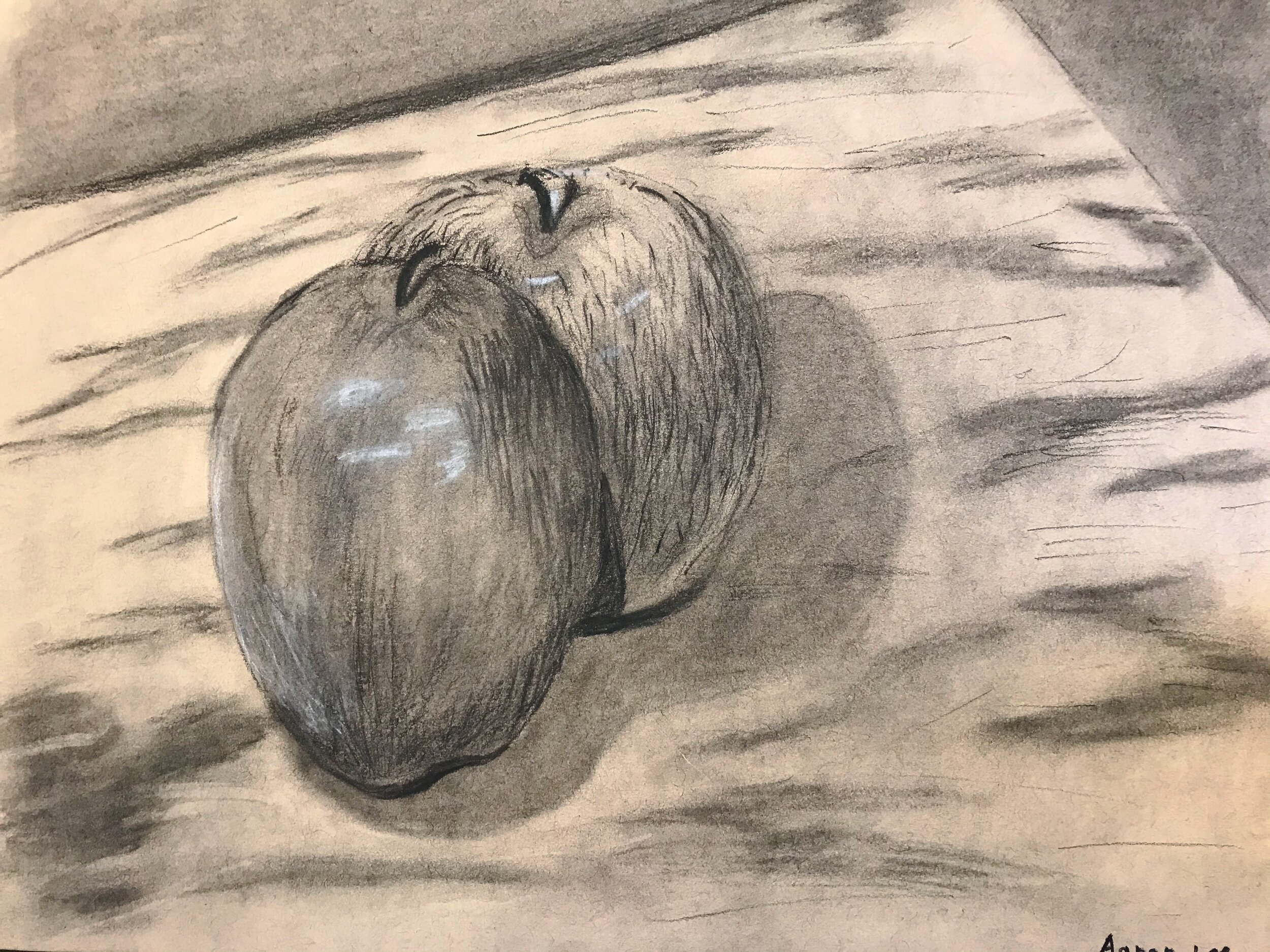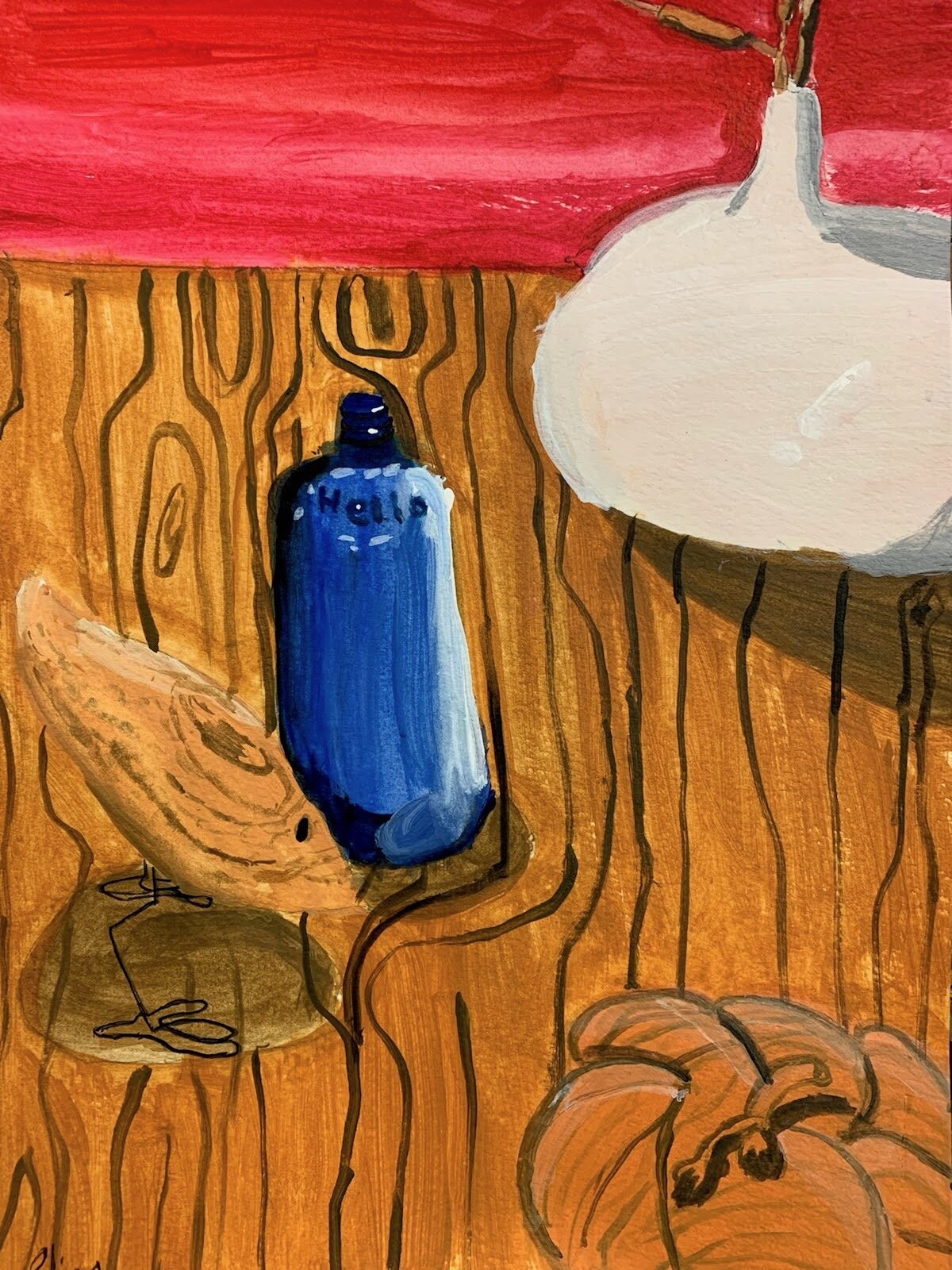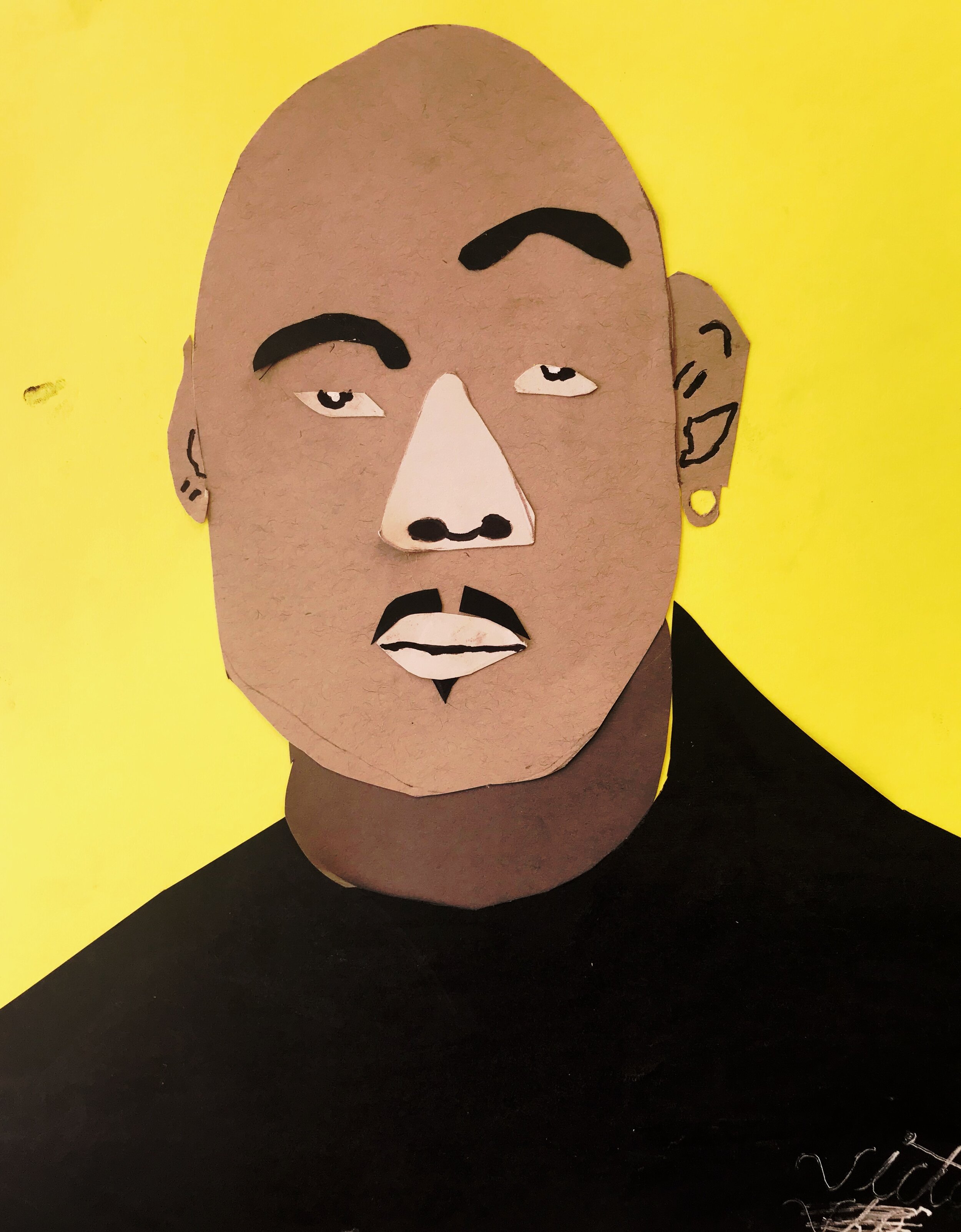Observe: 3 Objects (Shape & Pattern)
Using what you learned about shape and pattern in the previous lessons, draw three objects from life. Emphasizing their flattened shapes and any patterns on the objects. Start with the big shapes and then move on to smaller shapes and details.
Sami, age 10.
Observe: 2 Objects (Value & Form)
Using what you learned about value and form in the previous lessons, draw two objects from life. Start with the big shapes and then move on to smaller shapes and details.
Aaron, age 11.
Observe: Objects in Perspective
Using what you learned about perspective in the previous lessons, set up a still life to be drawn in perspective. Use a ruler to help you see the correct angles. Start with the big shapes and then move on to smaller shapes and details.
Eliza, age 10.


















